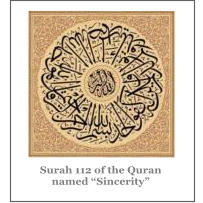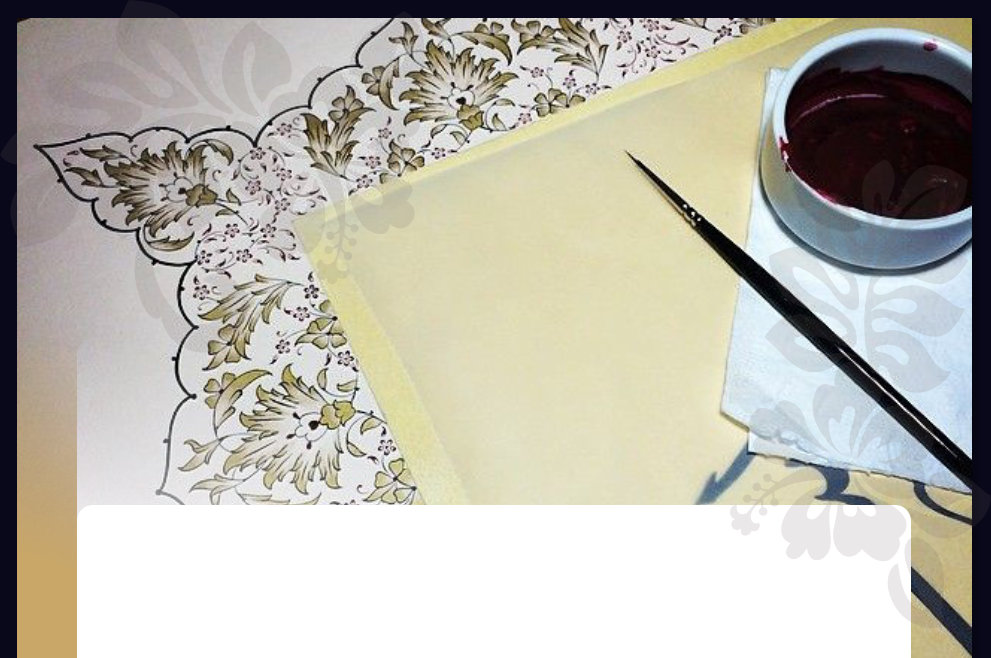

Al-Faraheedi

Copyright © 2011-2018 Academia-srt Network, All Rights Reserved
Evolution of the Quranic Script
The Documentary "The Caravan of Light" is an introduction to the origin and development of the Quranic Arabic script. The study of the development of the Quranic script is itself the history of the development of Arabic calligraphy and Islamic Arts. Schools of different styles emergd as Quranic texts were calligraphed, a tradition carried on and preserved in many manuscripts today. The following is a transcript of the original video created. Source Arabic video: http://multaqa.qurancomplex.gov.sa/?page_id=120 English video: http://multaqa.qurancomplex.gov.sa/en/?page_id=120The Revelation of the Quran
“Verily We have brought down the Quran, and surely, We will guard it (from corruption)" [Quran: Chapter 15-Verse 9]. Before the prophet was sent, the world lived a life full of various kinds of hideous deeds. It was such an environment clouded with whims, anarchy, and adultery in the Arabian Peninsula that Muhammad ibn Abdillaah the unlettered prophet-peace and blessing be upon him- grew up and was known among his people as al-ameen, the trustworthy. In the morning of a magnificent day, in the month of Ramadan of the year 610CE, Gabriel -peace be upon him- came to the cave of Hira where the prophet -peace and blessings of Allah be upon him- used to seclude himself for worship and meditation for days and nights together bringing with him ayat (verses) from the glorious Quran. He said: “read”. The Prophet replied: “I cannot read”. He held him, pressed him hard to his bosom, and then let him go. This he did several times and then read unto him the Words of Allah: "Read! In the name of your Lord Who has created (all that exist). He has created man from a clot. Read! And your Lord is the Most Generous. Who has taught (writing) by the pen. He has taught man that which he knew not." [Quran: Chapter 96] Thus came about the emergence of the light of prophethood and thus commenced the revelation of the glorious Quran to the prophet of mercy, Muhammad the son of Abdullah -peace and blessings of Allah be upon him. The revelation of the Glorious Quran continued for twenty three years, thirteen in Mecca and ten in Medina. It was not revealed to the prophet -peace and blessings of Allah be upon him- all at the same time. Revelations came in response to events and happenings. Divine wisdom required that it should be so in order to facilitate their memorization and comprehension in a land where ignorance and illiteracy prevailed. It also contributed a gradual elimination of wrong beliefs and harmful customs and helped the people to get accustomed to the laws of Shariah (Islamic law) and to grow up practicing them.The Development of the Quranic Script
The Arabian Peninsula in which the prophet -peace and blessings be upon him- lived had only a limited knowledge of the art of writing. Very few knew how to write, nonetheless a number of those who believed in the prophet -peace and blessings be upon him- were good at writing so he used to select amongst the companions those who would write down the Quran for him. He would direct them as to where to place a specific revelation in the revealed surahs (chapters). This springs out his eagerness and his commitment to preserve the Quran in writing which of course is a mode of guarding the glorious revelation. The scribes who wrote the glorious Quran were well known, amongst them were: Abu Bakr, Omar, Othman, Ali, Az-Zubair bin Al-Awwam, and Zaid bin Thaabit. As a precaution, the prophet -peace and blessings of Allah be upon him- prohibited his companions during the early stages of his prophetic career from writing down anything on his authority other than the Quran for fear of his sayings getting mixed up with the ayat (verses) of the Quran. Subsequently, when the practice of writing the Quran progressed, and the companions could explicitly distinguish between the ayat (verses) of the Quran and the sayings of the prophet -peace and blessings of Allah be upon him- he permitted them to write down his sunnah (the prophet’s words and actions). However, the prophet -peace and blessings of Allah be upon him- used to present to Gabriel -peace be upon him- every year what was revealed to him, while Gabriel listened to him. He did this twice in the year he passed away. As time passed by, the Quranic revelation to the prophet -peace and blessings of Allah be upon him- continued. By the end of the prophetic era, the whole Quran was learned by heart by the Quran reciters among the companions as it was inscribed on leaves and other materials available at that time with the ayat (verses) arranged in sequence though not all of it in one collection. The prophet - peace and blessings of Allah be upon him- also did not command the collection of the Quran in one Mus-haf (book) in view of the fact that the companions were many in number and they had committed it to memory very well. Another reason was that he was expecting further revelations and thus there was no need for its collection. Eventually, when the prophet -peace and blessings of Allah be upon him-passes away, the Glorious Quran was safely preserved in the hearts of the companions and was also with those who used to write it down. Abu Bakr As-Siddeeq became the Caliph of the Muslims. The battle of Yamamah took place between the apostates and the Muslims in the 11th year of the Islamic calendar. In the battle, a large number of Quran reciters were martyred. Omar ibn al-Khattab was alarmed at this great loss of the Quran reciters which might lead to the Quran been lost and thus he rushed to the Caliph As-Siddeeq and suggested to him that the Quran should be collected in one Mus-haf (book). Omar persistently persuaded him until Allah opened up his heart to accepting his suggestion. He entrusted Zaid ibn Thabit with the task of collecting the Quran and he paid special attention to the arrangement of all the ayat (verses) and the surahs (chapters). During the caliphate of Abu Bakr, the matter remained the way it was at the time of the prophet -peace and blessings of Allah be upon him- as to what was written of the Quran. The companions wrote the ayahs as they had heard them from the prophet -peace and blessings of Allah be upon him. The collected pages of the Quran remained with Abu Bakr, then Omar, then they passed them on to the mother of the believers Hafsah -may Allah be pleased with all of them.The Seven Dialects of the Quran & the Othmanic Orthography
It is an act of mercy towards this nation that the Quran was revealed in seven readings, this removed constrictions and made the recitations of the Quran readings easy. By seven readings is meant seven dialectal variations in the Quranic words, based on the dialects of the Arabic language. This does not mean that every word was read in seven different ways according to seven dialects. What it means is that seven is the utmost number of variations in some words. As Islam spread with many people embracing it and the Quran was learned in the different Islamic countries, it was copied in accordance with what was taught by the companions. Muslims observed differences in the styles of recitations compared to the recitation of the Muslims of other countries. This lead to discrepancies as the people of every country regarded their own reading to be the correct one. In the year of 25 after Hijra, Huthayfah ibn Al-Yamaan brought this information to the rightly guided Caliph Othman bin Al-Affan -may Allah be pleased with him- whom in turn called upon the companions after consultations to write one master Mus-haf, Al-Mus-haf Al- Imam (the main book), according to which all the Muslims regardless of their locations shall read the Quran. He selected four out of the great companions to write the Mus-haf (book). They were Zayd bin Thabit from Al-Ansar, and Abdullah bin Az-Zubair, Saeed bin Al-Aas, and Abdul-Rahman ibn Al-Harith ibn Hisham from Quraish. He presented to them the papers collected by Abu Bakr from the mother of the believers Hafsah bint Omar to serve as the basis for writing the Mus-haf. He gave them a rule to follow in case there was any difference in opinion and that was to write the Mus-haf in the dialect of Quraish (the prophet’s tribe). Six copies of this Mus-haf were made and sent to Mecca, Sham, Kufa, and Busra, while one remained in Medina and was called Al- Madani Al-Aam which means the Medina general copy. Othman also retained a copy for himself which was called Al-Madani Al-khaas which means the Medina private copy of Mus-haf Al-Imam, the Imam's copy. He sent with every copy of the Mus-haf a reciter to teach the people of every location according to the Mus-haf sent to them, and in order to achieve the noble goal of his plan, Othman took firm steps and ordered all other Mus-hafs apart from the six copies to be burnt. This was a decision he took after consulting and getting the approval of all the companions -may Allah be pleased with all of them. This was how the Mus-haf was collected during the caliphate of Othman with great meticulousness and accuracy to put an end to the dissension made by the variations in the Quranic reading, unite all the Muslims, and to protect the book of Allah from distortion and alteration -may Allah be pleased with them and reward them abundantly on behalf of Islam and Muslims. The Mus-haf was written in the Hejazi style of writing which later developed to what came to be known as al-Kufi style of writing and remained like that for about forty years. When the Islamic countries grew in number and were spread far and wide, and more and more people got interested in writing and a number of languages interacted with each other, a new situation arose in the time of At-Tabieen, which means the successors of the companions. Grammatical mistakes and errors became widespread amongst the people in both spoken and written language. To check the spread of grammatical mistakes and errors in Quran recitation, the following steps were taken. The Mus-haf was partially vocalized to indicate the case ending. The first to do this was Abu-l-Aswad Ad-Duoli. His method was as follows: he placed one dot above the last letter to indicate the fat-ha, in front of it to indicate the dammah, and below it to indicate the kasrah. To indicate the tanween (the doubling of a short vowel), he placed two dots instead of one. These dots were in red ink to differentiate them from the other writings in the Mus-haf, and were known as naqt-ul-irab. Dots to differentiate similar looking letters, these dots were added to 15 letters. Dissimilar letters which are 13 in number remained without dots. These dots were known as naqt- ul-ijaam. This was done with the same ink color with which the Mus-haf was written in order to differentiate it from the former done by abu-l-aswad. After the use of naqt-ul-iraab and naqt-ul-ijaam become widespread, the scribes of books and Mus-hafs faced difficulty in using dots for the vocalization of words because the exercise needed two different ink colors and two pens, one for writing the letters, and the other for vocalization. The solution was found in a method used by Al-Khalil ibn Ahmad Al-Faraheedi. He replaced the dots used for vocalization with a particular sign for each of the vowels. For the dammah, he designated a small waw to be placed above the letter, a small yaa under the letter for the kasrah, and a horizontal alif above the letter for the fat-ha. For the tanween, he doubled these vowel signs. He also added some small signs like that of al-hamz, at-tashdeed, arrowm, and al-ishmaam. These signs were introduced to improve the Arabic writing system are still in use up till now with some modifications. Continue to the Evolution of the Quranic Script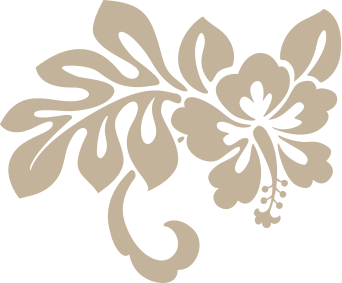
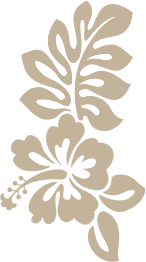

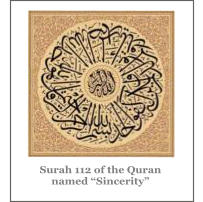
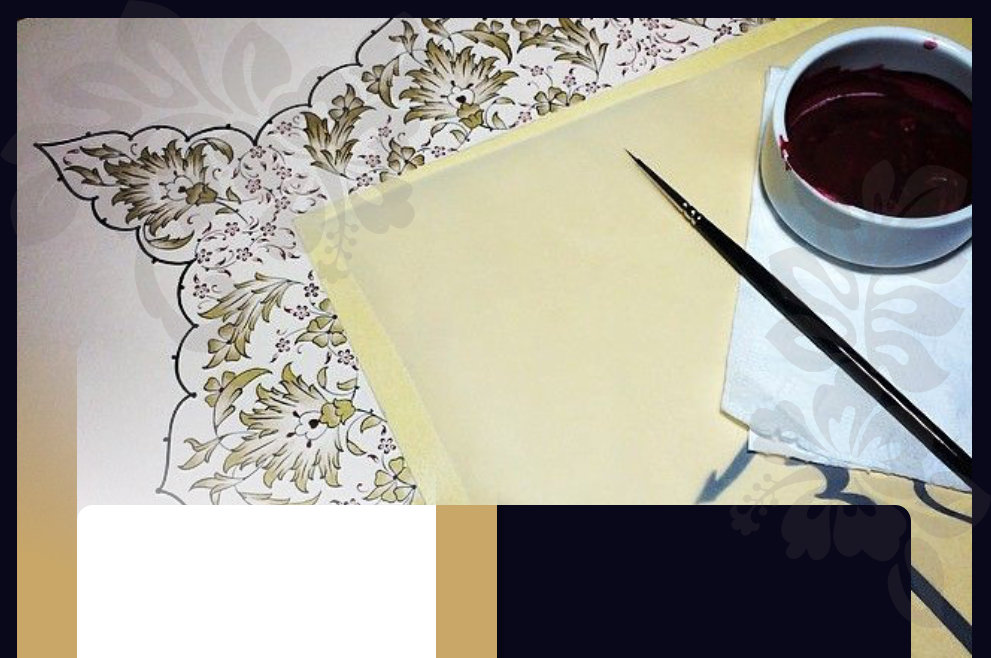

Al-Faraheedi

Copyright © 2011-2018 Academia-srt Network, All Rights Reserved
Evolution of the
Quranic Script
The Documentary "The Caravan of Light" is an introduction to the origin and development of the Quranic Arabic script. The study of the development of the Quranic script is itself the history of the development of Arabic calligraphy and Islamic Arts. Schools of different styles emergd as Quranic texts were calligraphed, a tradition carried on and preserved in many manuscripts today. The following is a transcript of the original video created. Source Arabic video: http://multaqa.qurancomplex.gov.sa/?page_id=120 English video: http://multaqa.qurancomplex.gov.sa/en/?page_id=120The Revelation of the Quran
“Verily We have brought down the Quran, and surely, We will guard it (from corruption)" [Quran: Chapter 15- Verse 9]. Before the prophet was sent, the world lived a life full of various kinds of hideous deeds. It was such an environment clouded with whims, anarchy, and adultery in the Arabian Peninsula that Muhammad ibn Abdillaah the unlettered prophet-peace and blessing be upon him- grew up and was known among his people as al-ameen, the trustworthy. In the morning of a magnificent day, in the month of Ramadan of the year 610CE, Gabriel -peace be upon him- came to the cave of Hira where the prophet -peace and blessings of Allah be upon him- used to seclude himself for worship and meditation for days and nights together bringing with him ayat (verses) from the glorious Quran. He said: “read”. The Prophet replied: “I cannot read”. He held him, pressed him hard to his bosom, and then let him go. This he did several times and then read unto him the Words of Allah: "Read! In the name of your Lord Who has created (all that exist). He has created man from a clot. Read! And your Lord is the Most Generous. Who has taught (writing) by the pen. He has taught man that which he knew not." [Quran: Chapter 96] Thus came about the emergence of the light of prophethood and thus commenced the revelation of the glorious Quran to the prophet of mercy, Muhammad the son of Abdullah -peace and blessings of Allah be upon him. The revelation of the Glorious Quran continued for twenty three years, thirteen in Mecca and ten in Medina. It was not revealed to the prophet -peace and blessings of Allah be upon him- all at the same time. Revelations came in response to events and happenings. Divine wisdom required that it should be so in order to facilitate their memorization and comprehension in a land where ignorance and illiteracy prevailed. It also contributed a gradual elimination of wrong beliefs and harmful customs and helped the people to get accustomed to the laws of Shariah (Islamic law) and to grow up practicing them.The Development of the Quranic
Script
The Arabian Peninsula in which the prophet -peace and blessings be upon him- lived had only a limited knowledge of the art of writing. Very few knew how to write, nonetheless a number of those who believed in the prophet -peace and blessings be upon him- were good at writing so he used to select amongst the companions those who would write down the Quran for him. He would direct them as to where to place a specific revelation in the revealed surahs (chapters). This springs out his eagerness and his commitment to preserve the Quran in writing which of course is a mode of guarding the glorious revelation. The scribes who wrote the glorious Quran were well known, amongst them were: Abu Bakr, Omar, Othman, Ali, Az-Zubair bin Al-Awwam, and Zaid bin Thaabit. As a precaution, the prophet -peace and blessings of Allah be upon him- prohibited his companions during the early stages of his prophetic career from writing down anything on his authority other than the Quran for fear of his sayings getting mixed up with the ayat (verses) of the Quran. Subsequently, when the practice of writing the Quran progressed, and the companions could explicitly distinguish between the ayat (verses) of the Quran and the sayings of the prophet -peace and blessings of Allah be upon him- he permitted them to write down his sunnah (the prophet’s words and actions). However, the prophet -peace and blessings of Allah be upon him- used to present to Gabriel -peace be upon him- every year what was revealed to him, while Gabriel listened to him. He did this twice in the year he passed away. As time passed by, the Quranic revelation to the prophet -peace and blessings of Allah be upon him- continued. By the end of the prophetic era, the whole Quran was learned by heart by the Quran reciters among the companions as it was inscribed on leaves and other materials available at that time with the ayat (verses) arranged in sequence though not all of it in one collection. The prophet -peace and blessings of Allah be upon him- also did not command the collection of the Quran in one Mus-haf (book) in view of the fact that the companions were many in number and they had committed it to memory very well. Another reason was that he was expecting further revelations and thus there was no need for its collection. Eventually, when the prophet -peace and blessings of Allah be upon him- passes away, the Glorious Quran was safely preserved in the hearts of the companions and was also with those who used to write it down. Abu Bakr As-Siddeeq became the Caliph of the Muslims. The battle of Yamamah took place between the apostates and the Muslims in the 11th year of the Islamic calendar. In the battle, a large number of Quran reciters were martyred. Omar ibn al-Khattab was alarmed at this great loss of the Quran reciters which might lead to the Quran been lost and thus he rushed to the Caliph As- Siddeeq and suggested to him that the Quran should be collected in one Mus-haf (book). Omar persistently persuaded him until Allah opened up his heart to accepting his suggestion. He entrusted Zaid ibn Thabit with the task of collecting the Quran and he paid special attention to the arrangement of all the ayat (verses) and the surahs (chapters). During the caliphate of Abu Bakr, the matter remained the way it was at the time of the prophet -peace and blessings of Allah be upon him- as to what was written of the Quran. The companions wrote the ayahs as they had heard them from the prophet - peace and blessings of Allah be upon him. The collected pages of the Quran remained with Abu Bakr, then Omar, then they passed them on to the mother of the believers Hafsah -may Allah be pleased with all of them.The Seven Dialects of the Quran &
the Othmanic Orthography
It is an act of mercy towards this nation that the Quran was revealed in seven readings, this removed constrictions and made the recitations of the Quran readings easy. By seven readings is meant seven dialectal variations in the Quranic words, based on the dialects of the Arabic language. This does not mean that every word was read in seven different ways according to seven dialects. What it means is that seven is the utmost number of variations in some words. As Islam spread with many people embracing it and the Quran was learned in the different Islamic countries, it was copied in accordance with what was taught by the companions. Muslims observed differences in the styles of recitations compared to the recitation of the Muslims of other countries. This lead to discrepancies as the people of every country regarded their own reading to be the correct one. In the year of 25 after Hijra, Huthayfah ibn Al-Yamaan brought this information to the rightly guided Caliph Othman bin Al-Affan -may Allah be pleased with him- whom in turn called upon the companions after consultations to write one master Mus-haf, Al-Mus-haf Al-Imam (the main book), according to which all the Muslims regardless of their locations shall read the Quran. He selected four out of the great companions to write the Mus-haf (book). They were Zayd bin Thabit from Al-Ansar, and Abdullah bin Az-Zubair, Saeed bin Al- Aas, and Abdul-Rahman ibn Al-Harith ibn Hisham from Quraish. He presented to them the papers collected by Abu Bakr from the mother of the believers Hafsah bint Omar to serve as the basis for writing the Mus-haf. He gave them a rule to follow in case there was any difference in opinion and that was to write the Mus-haf in the dialect of Quraish (the prophet’s tribe). Six copies of this Mus-haf were made and sent to Mecca, Sham, Kufa, and Busra, while one remained in Medina and was called Al-Madani Al-Aam which means the Medina general copy. Othman also retained a copy for himself which was called Al-Madani Al-khaas which means the Medina private copy of Mus-haf Al-Imam, the Imam's copy. He sent with every copy of the Mus-haf a reciter to teach the people of every location according to the Mus-haf sent to them, and in order to achieve the noble goal of his plan, Othman took firm steps and ordered all other Mus-hafs apart from the six copies to be burnt. This was a decision he took after consulting and getting the approval of all the companions -may Allah be pleased with all of them. This was how the Mus- haf was collected during the caliphate of Othman with great meticulousness and accuracy to put an end to the dissension made by the variations in the Quranic reading, unite all the Muslims, and to protect the book of Allah from distortion and alteration -may Allah be pleased with them and reward them abundantly on behalf of Islam and Muslims. The Mus-haf was written in the Hejazi style of writing which later developed to what came to be known as al- Kufi style of writing and remained like that for about forty years. When the Islamic countries grew in number and were spread far and wide, and more and more people got interested in writing and a number of languages interacted with each other, a new situation arose in the time of At-Tabieen, which means the successors of the companions. Grammatical mistakes and errors became widespread amongst the people in both spoken and written language. To check the spread of grammatical mistakes and errors in Quran recitation, the following steps were taken. The Mus-haf was partially vocalized to indicate the case ending. The first to do this was Abu-l- Aswad Ad-Duoli. His method was as follows: he placed one dot above the last letter to indicate the fat-ha, in front of it to indicate the dammah, and below it to indicate the kasrah. To indicate the tanween (the doubling of a short vowel), he placed two dots instead of one. These dots were in red ink to differentiate them from the other writings in the Mus-haf, and were known as naqt-ul-irab. Dots to differentiate similar looking letters, these dots were added to 15 letters. Dissimilar letters which are 13 in number remained without dots. These dots were known as naqt-ul-ijaam. This was done with the same ink color with which the Mus-haf was written in order to differentiate it from the former done by abu-l-aswad. After the use of naqt-ul-iraab and naqt-ul- ijaam become widespread, the scribes of books and Mus-hafs faced difficulty in using dots for the vocalization of words because the exercise needed two different ink colors and two pens, one for writing the letters, and the other for vocalization. The solution was found in a method used by Al-Khalil ibn Ahmad Al- Faraheedi. He replaced the dots used for vocalization with a particular sign for each of the vowels. For the dammah, he designated a small waw to be placed above the letter, a small yaa under the letter for the kasrah, and a horizontal alif above the letter for the fat-ha. For the tanween, he doubled these vowel signs. He also added some small signs like that of al-hamz, at-tashdeed, arrowm, and al-ishmaam. These signs were introduced to improve the Arabic writing system are still in use up till now with some modifications. Continue to the Evolution of the Quranic Script


